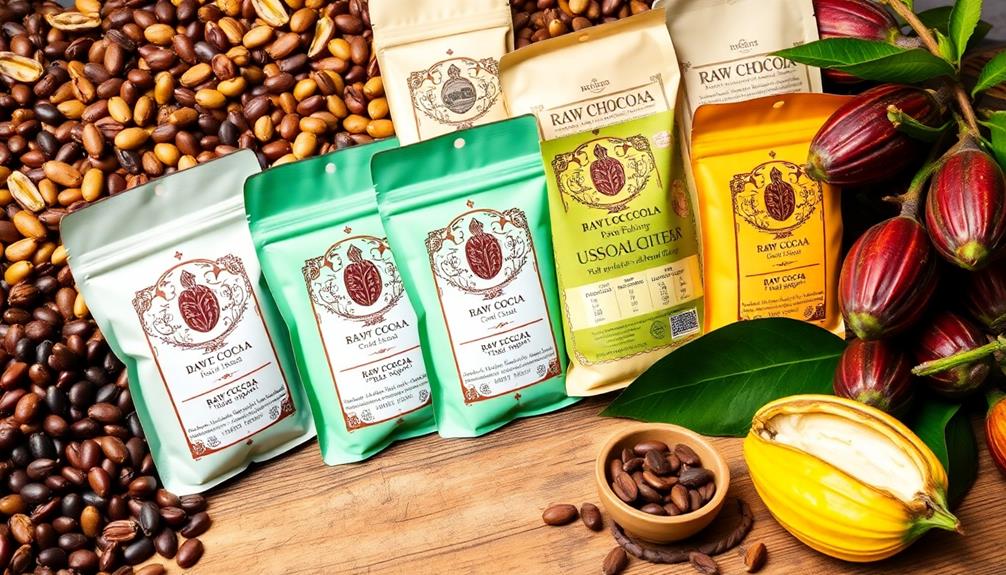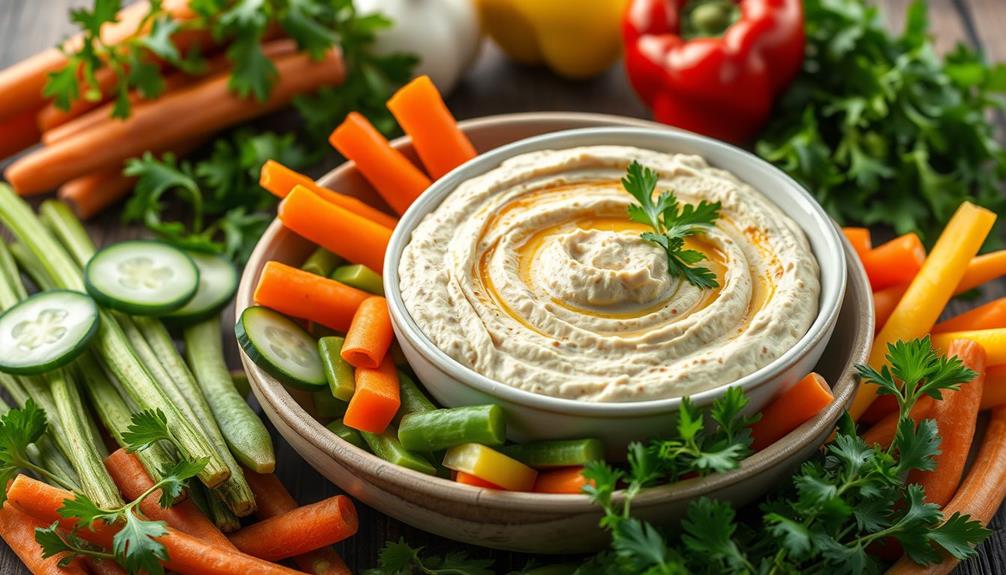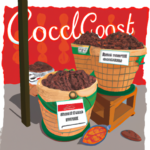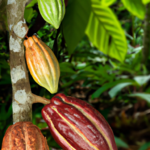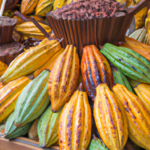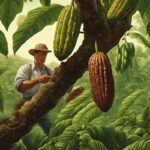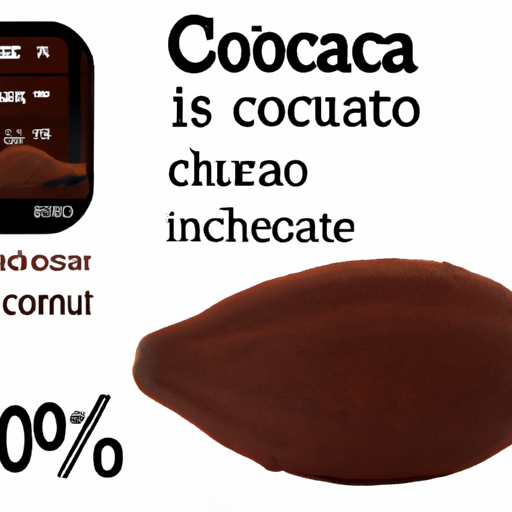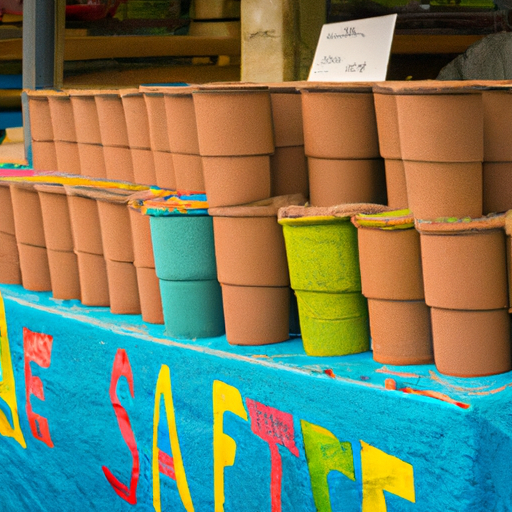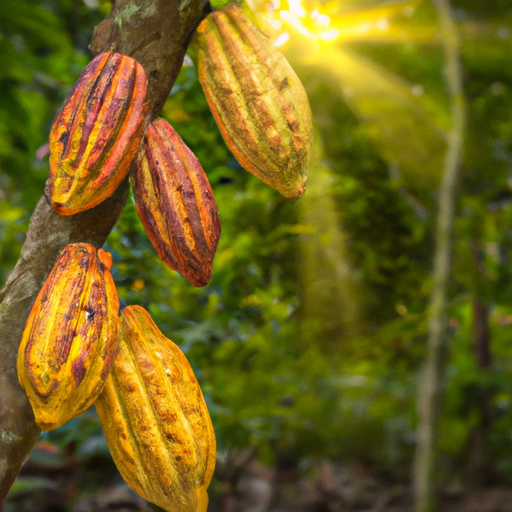Interpreting cacao labels can help you choose higher-quality chocolate. Look for simple ingredient lists; the best craft chocolate uses just cocoa beans, sugar, and cocoa butter. Check for transparency in sourcing — labels that mention specific farms or cooperatives indicate quality and ethical practices. Certifications like Fair Trade show commitment to fair wages and sustainability. Pay attention to phrases like "bean to bar," suggesting craftsmanship over mass production. By understanding these labels, you can support responsible sourcing methods and make delicious chocolate choices. There's plenty more insight into this topic that can enhance your chocolate shopping experience.
Key Takeaways
- Look for minimal ingredient lists; high-quality raw cacao typically contains just cacao beans, sugar, and cocoa butter.
- Check for ethical certifications like Fair Trade, ensuring sustainable practices and fair wages for farmers.
- Transparency regarding cacao sourcing, such as specific farms or estates, indicates quality and accountability in production.
- Understand labeling terms; "bean to bar" signifies a hands-on approach, often resulting in superior flavor and craftsmanship.
- Familiarize yourself with processing techniques; meticulous fermentation and roasting enhance the flavor profile of raw cacao products.
Understanding Chocolate Quality
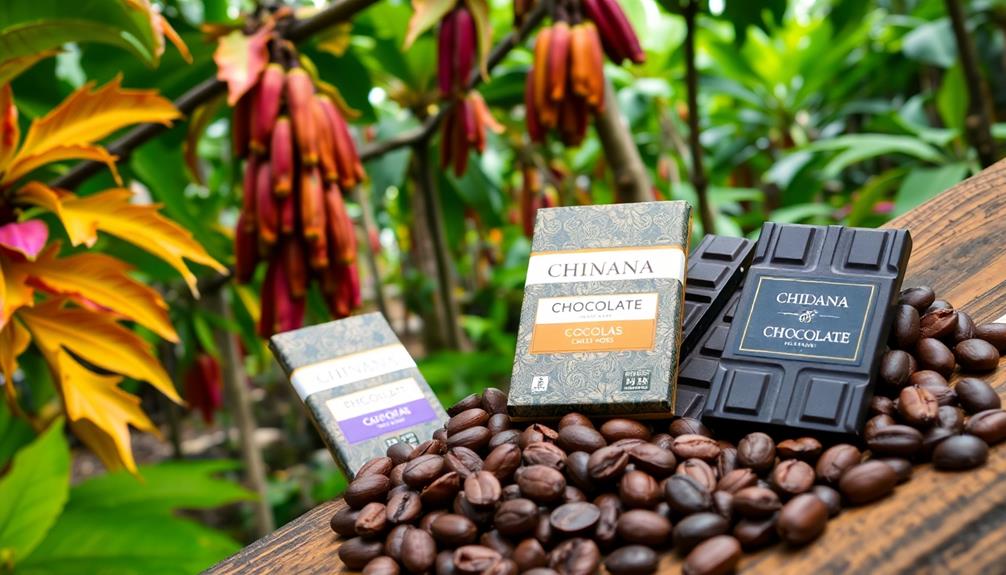
When it comes to understanding chocolate quality, you'll want to focus on the ingredients and sourcing practices behind your favorite treats. Real craft chocolate typically contains no more than three ingredients—cocoa beans, sugar, and cocoa butter—while milk chocolate may have four. This emphasis on simplicity and quality is key.
If you spot unfamiliar or artificial ingredients in chocolate bars, it often signals mass production and lower quality. Craft chocolate makers prioritize high-quality cacao, keeping additives to a minimum.
When you check chocolate labels, look for specifics like the estate, farm, or cooperative where the cacao is sourced. This transparency helps you make informed choices about what you're buying. Higher prices usually indicate better quality, ethical sourcing, and fair labor practices, so don't shy away from investing in a quality bar.
Understanding terms like cocoa solids and cacao percentage can also guide your selection. Higher cacao percentages typically mean a richer, more intense flavor, especially in dark chocolate.
Sourcing and Crafting Transparency
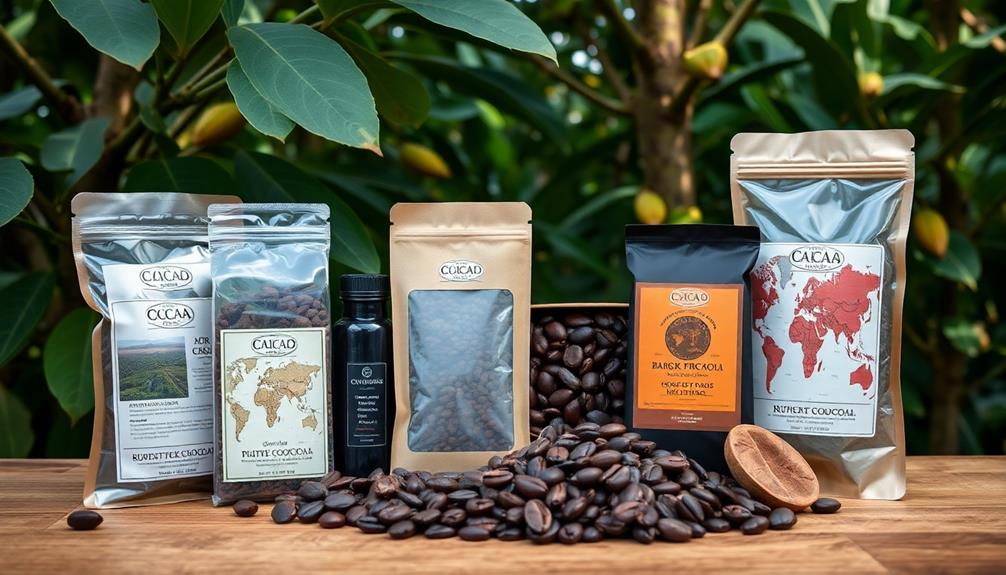
Understanding the sourcing and crafting processes behind your chocolate is essential for appreciating its true quality. When you choose quality chocolate, look for packaging that specifies the estate, farm, co-operative, or cocoa farmers involved in sourcing the cacao beans. This level of transparency guarantees traceability, allowing you to connect with the origins of your chocolate.
Just as contemporary Indian painting explores urban themes and socio-political issues, the narrative behind your chocolate can reveal much about its cultural significance and the communities involved in its production urban themes in art.
Craft chocolate makers often provide detailed origin information, similar to what you'd find in wine or coffee. This enhances your tasting experience and showcases their commitment to quality. The presence of maker details and their address on the packaging further indicates accountability in the production process, setting craft chocolate apart from mass-produced options.
Beware of misleading labels on mass-produced chocolate that may flaunt prestigious branding without assuring ethical sourcing practices. By supporting craft chocolate production, especially from the same country where the cacao is sourced, you're not just enjoying a superior product; you're also bolstering local economies and promoting sustainable practices.
Crafting Processes and Techniques
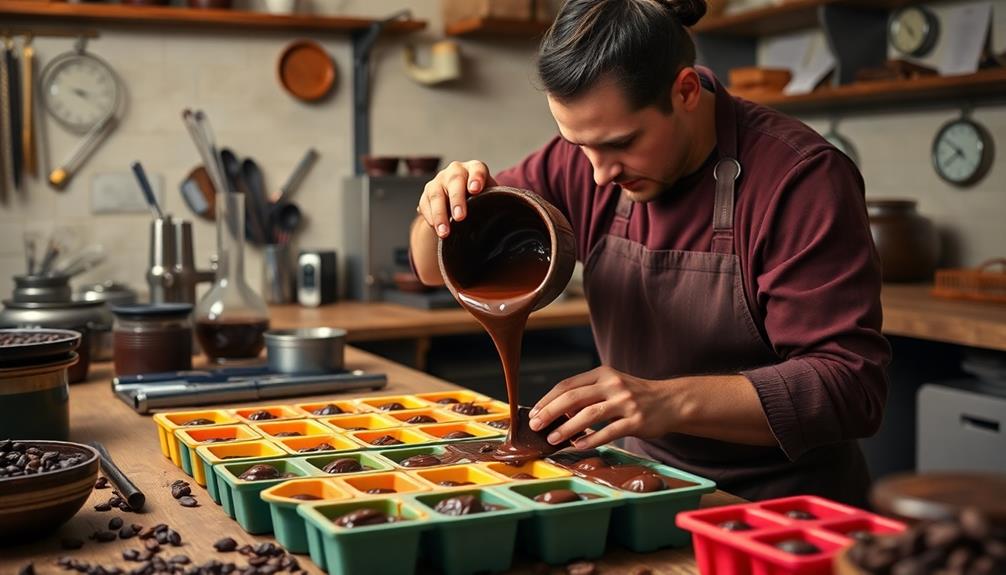
Craft chocolate makers take great care in their crafting processes, ensuring that every step from bean to bar contributes to the final flavor profile. The journey begins with high-quality cocoa beans, which undergo a meticulous fermentation duration that can greatly alter the taste. The method of fermentation, along with roasting type, plays an important role in developing the unique characteristics of craft chocolate.
Once fermented, the cocoa beans are roasted, ground, and transformed into cocoa mass, with each of these steps carefully controlled to achieve the desired flavor notes. Grind time is also essential; a finer grind can lead to a smoother texture and richer taste.
Craft chocolate brands often provide detailed batch information, which highlights their exclusive production methods and enhances your tasting experience. Additionally, some makers experiment with aging techniques to deepen flavor complexity, showcasing their commitment to the art of chocolate making.
Be cautious with products labeled as "raw"; true raw cacao is rare, and understanding these crafting processes helps you discern genuine quality from misleading claims. With craft chocolate, you're not just tasting chocolate—you're experiencing a carefully curated flavor journey.
Ethical Sourcing and Consumer Impact
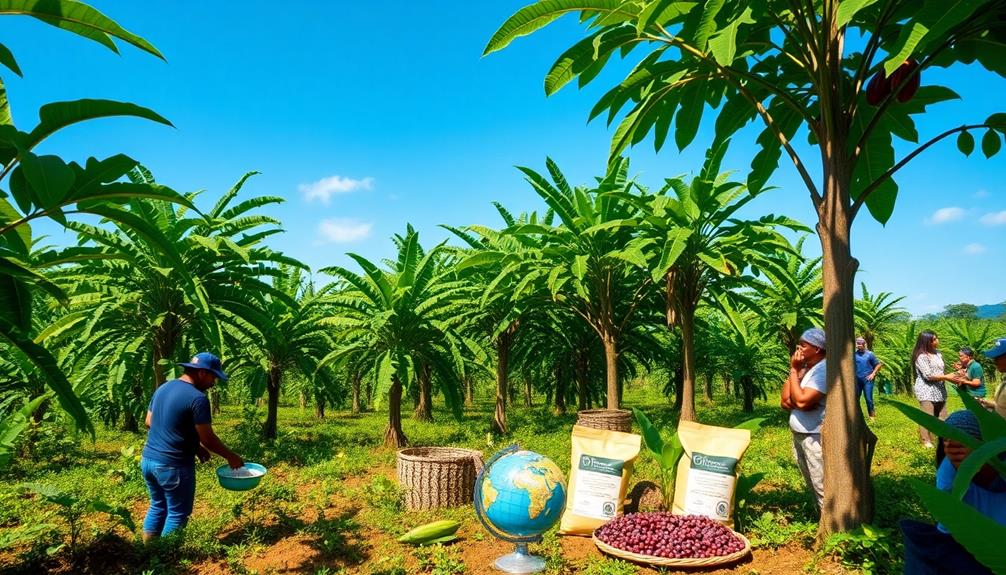
Ethical sourcing in chocolate production not only supports farmers but also shapes your chocolate choices.
When you prioritize ethical sourcing, you're encouraging brands to adopt sustainable practices that benefit both people and the planet. Understanding the impact of your purchases can lead to more responsible consumption.
Here are three key aspects to take into account:
- Fair Trade Certification: Look for brands that are Fair Trade certified. This guarantees farmers receive fair wages and work under sustainable conditions, improving their quality of life.
- Transparency: Companies that provide detailed information about the origin of their cocoa beans foster trust. Knowing where your chocolate comes from can enhance your appreciation for the product and its creators.
- Environmental Sustainability: Support brands like Original Beans, which plant a tree for each bar sold. This contributes to carbon offsetting and promotes environmental sustainability.
Consumer Education and Label Literacy
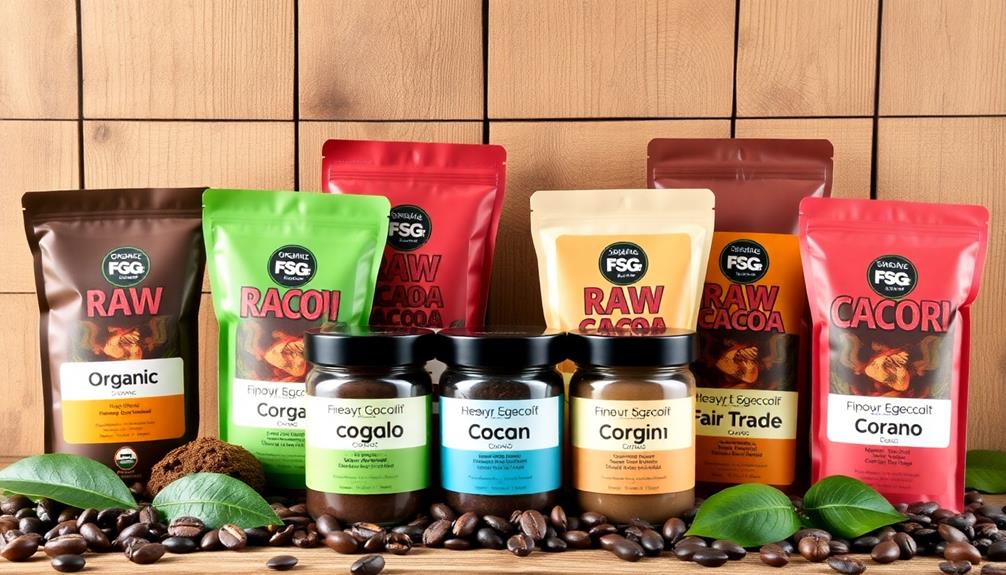
Making informed choices about chocolate involves more than just picking a brand; it requires a keen eye for labels and certifications. When you're selecting chocolate bars, start by examining the ingredient list. Ideally, the first ingredient should be cacao or raw chocolate, with minimal added sugars. This simplicity often indicates a higher quality product.
Transparency in sourcing is essential. Look for labels that specify the estate, farm, or cooperative from which the cocoa beans are sourced. This not only enhances trust but also supports ethical considerations.
Understanding terms like "bean to bar" can also guide your choices; it signifies that a maker processes whole cacao beans into chocolate, showcasing craftsmanship over mass production.
Familiarity with chocolate terminology is important, too. Knowing the difference between cocoa mass and cocoa solids can help you make educated decisions.
Finally, check for certifications like Fair Trade or Rainforest Alliance. These labels indicate ethical practices and responsible sourcing, guiding you toward sustainable chocolate choices.
Frequently Asked Questions
What to Look for When Buying Cacao?
When buying cacao, check for simple ingredient lists, a high cacao percentage, and "bean to bar" labeling. Look for ethical sourcing certifications like Fair Trade, ensuring quality and fair treatment for farmers.
How to Read a Chocolate Label?
When you read a chocolate label, look for simple ingredients, check the cacao percentage, and verify the origin. Avoid vague terms like "chocolatey," and seek certifications for ethical sourcing to guarantee quality and sustainability.
What Does 92 Cacao Mean?
When you see "92% cacao," it means 92% of the chocolate is pure cocoa solids and cocoa butter. This results in a rich, intense flavor with minimal sugar, making it a healthier indulgence for you.
What Does 72% Cacao Mean?
When you see "72% cacao," it means 72% of the chocolate's weight comes from cacao solids and butter. You'll enjoy a richer flavor with less sugar, making it a healthier option for chocolate lovers.
Conclusion
In your quest for quality chocolate, remember that every label tells a story. By understanding what terms like "single origin" or "fair trade" mean, you're not just making a purchase; you're voting with your wallet for better practices. So, immerse yourself in the world of raw cacao with curiosity, and let your choices reflect your values. With each bite, you're not just savoring chocolate; you're savoring the impact you can make. Choose wisely, and let chocolate change the world!

